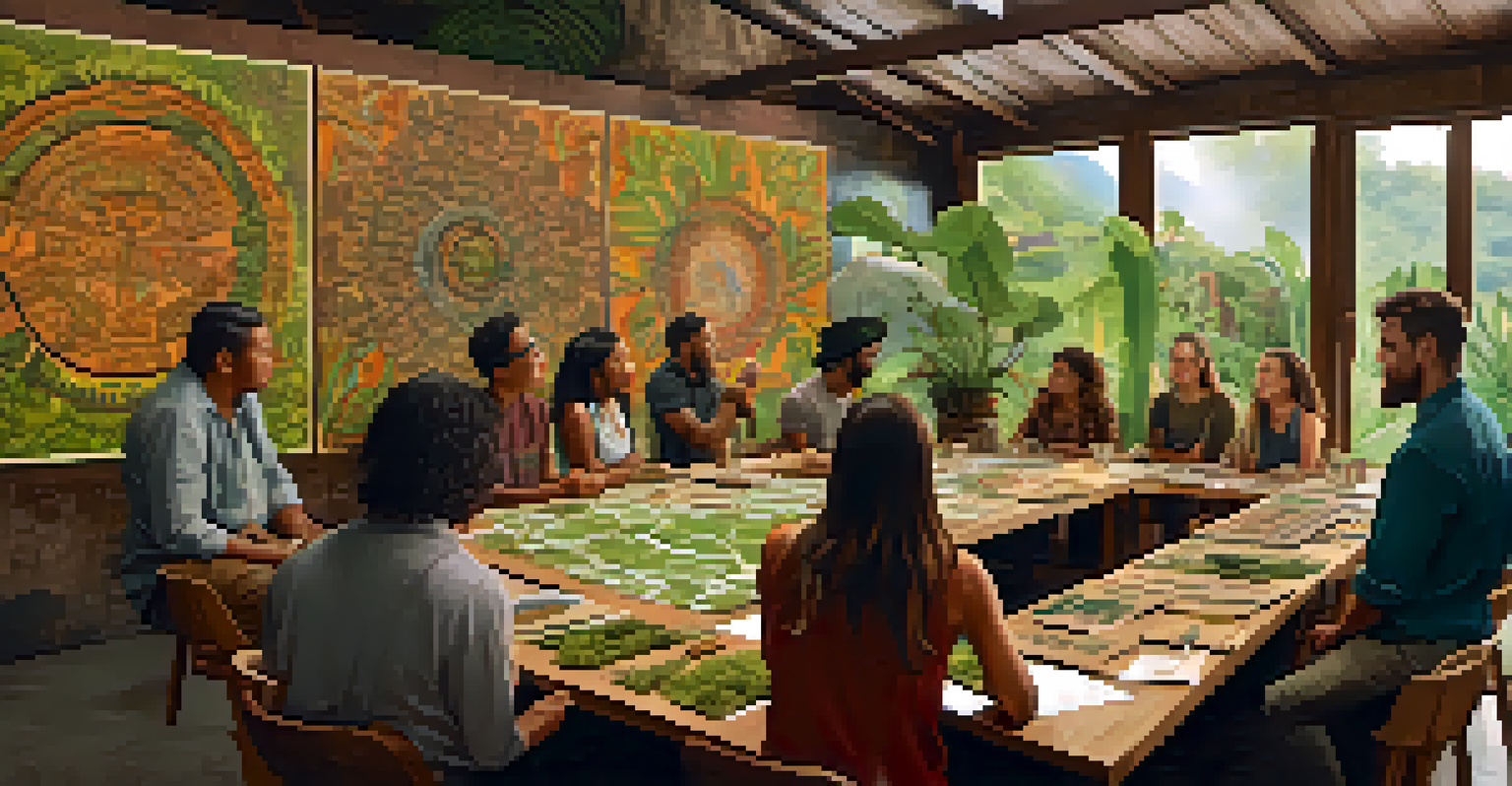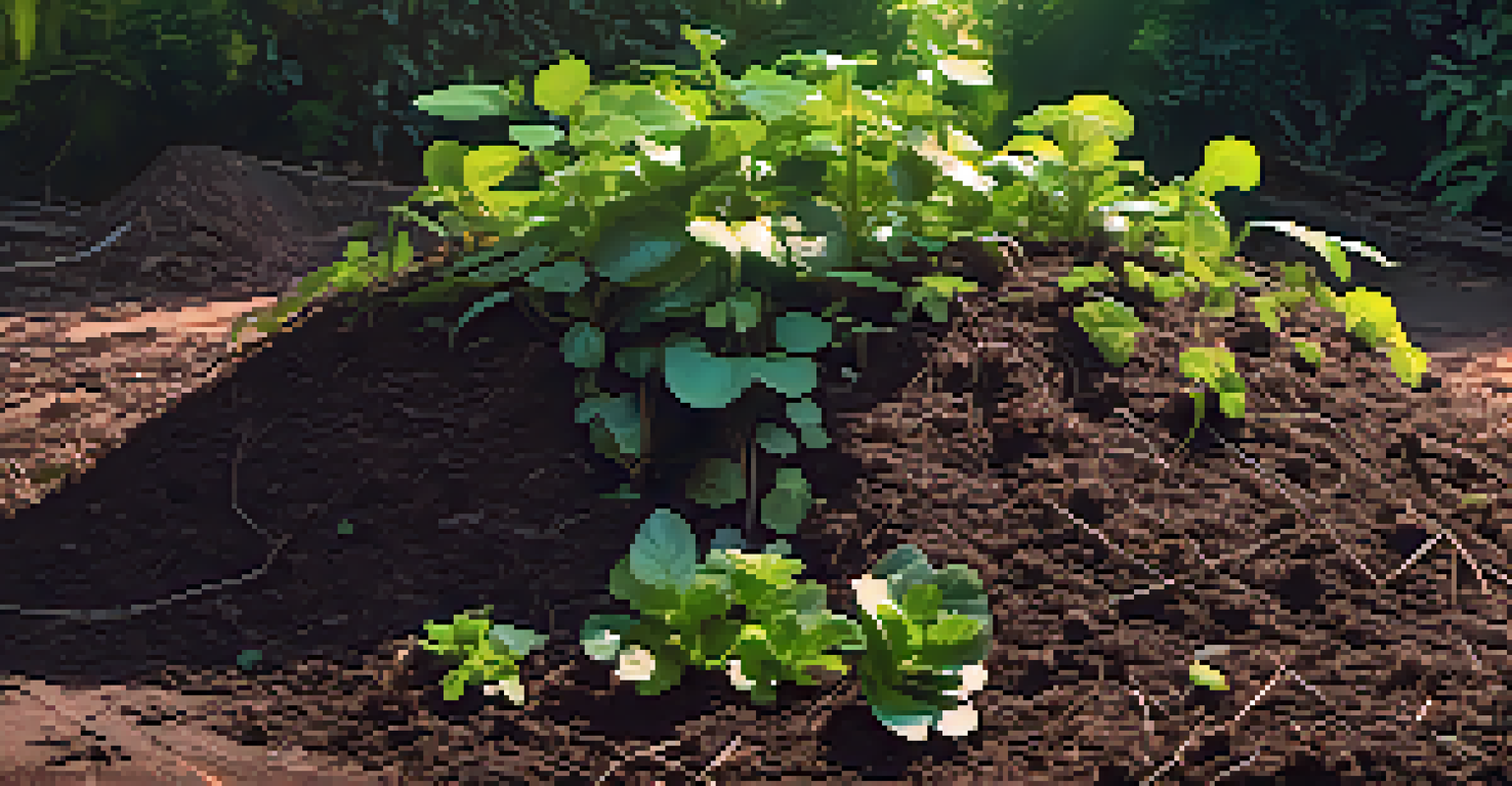Circular Economy Practices in Ayahuasca Production Explained

Understanding the Circular Economy Concept
The circular economy is an innovative approach that seeks to minimize waste and make the most of available resources. Instead of the traditional linear model, where products are made, used, and discarded, a circular economy focuses on reusing, repairing, and recycling materials. This model aims to create a closed-loop system that benefits both the environment and the economy.
We do not inherit the earth from our ancestors; we borrow it from our children.
In the context of ayahuasca production, this means embracing practices that preserve the natural ecosystem while ensuring sustainable harvesting of the necessary plants. By adopting circular principles, the ayahuasca community can not only maintain the integrity of their sacred practices but also contribute positively to their surroundings. Furthermore, this approach enhances the longevity of the resources they rely on.
Ultimately, understanding the circular economy framework is essential for establishing sustainable ayahuasca production methods. It encourages producers to think creatively about how they can reduce waste and enhance biodiversity, which are vital components of a healthy ecosystem.
Sustainable Sourcing of Ayahuasca Ingredients
Sourcing ingredients sustainably is a cornerstone of circular economy practices in ayahuasca production. This involves responsibly harvesting plants like the Banisteriopsis caapi vine and Psychotria viridis leaf, which are essential for creating ayahuasca. By ensuring that these plants are harvested in a way that allows them to regenerate, producers can maintain a steady supply without depleting natural resources.

Community involvement plays a significant role in sustainable sourcing. Local indigenous groups often have traditional knowledge about the best practices for harvesting these plants without harming ecosystems. By collaborating with these communities, ayahuasca producers can develop methods that respect both the environment and cultural heritage.
Embrace Circular Economy Principles
The circular economy promotes reusing and recycling to minimize waste and enhance sustainability in ayahuasca production.
This sustainable sourcing not only benefits the planet but also enhances the quality of the ayahuasca produced. Plants grown in healthy, biodiverse environments tend to have more potent properties, which can lead to a more profound experience for those seeking the spiritual benefits of ayahuasca.
Implementing Zero Waste Practices
Zero waste practices are integral to a circular economy, aiming to eliminate waste rather than manage it. In ayahuasca production, this can be achieved by utilizing every part of the plant during the preparation process. For instance, leftover plant material can be composted or used as natural fertilizers, thus returning nutrients to the soil.
The greatest threat to our planet is the belief that someone else will save it.
Additionally, producers can adopt techniques such as drying and repurposing unused plant parts. This not only minimizes waste but also creates opportunities for new products, such as herbal teas or natural remedies that can benefit the community. Embracing these practices contributes to a more sustainable production cycle.
By implementing zero waste strategies, ayahuasca producers can demonstrate their commitment to sustainability. This not only attracts environmentally conscious consumers but also sets a precedent for other industries to follow, highlighting the importance of responsible production methods.
Educating Communities on Circular Practices
Education is key to fostering a circular economy in ayahuasca production. By providing knowledge about sustainable practices, communities can make informed decisions that impact their environment. Workshops and training sessions can empower individuals to adopt circular methods, enhancing their skills while promoting sustainability.
Informing the community about the benefits of a circular economy helps create a culture of responsibility. When people understand the importance of preserving their natural resources, they are more likely to engage in practices that support sustainability. This can lead to a collective effort towards promoting environmental stewardship.
Sustainable Sourcing is Key
Responsible harvesting of ayahuasca plants, guided by local knowledge, ensures resource regeneration and ecosystem health.
Moreover, education can bridge the gap between traditional practices and modern sustainability techniques. By integrating indigenous wisdom with contemporary knowledge, ayahuasca producers can create a more resilient and adaptive approach to production that respects both culture and the environment.
The Role of Technology in Circular Practices
Technology plays a pivotal role in enhancing circular economy practices in ayahuasca production. From improved tracking of plant growth to advanced composting techniques, modern technology can assist producers in optimizing their methods. For example, using drones or satellite imagery can help monitor plant health and growth patterns, allowing for more efficient harvesting.
Moreover, technology can facilitate the sharing of knowledge and best practices among producers. Online platforms and social media allow for the exchange of ideas and experiences, fostering a community that prioritizes sustainability. This collaborative approach can lead to innovative solutions that further enhance circular practices.
By embracing technology, ayahuasca producers can improve their production efficiency while minimizing environmental impact. This not only benefits the economy but also reinforces the importance of sustainable practices in preserving the ayahuasca tradition for future generations.
Creating Value Through Community Engagement
Community engagement is essential for building a successful circular economy in ayahuasca production. Involving local communities in decision-making processes ensures that their voices are heard and their needs are met. This collaborative approach fosters a sense of ownership and responsibility towards sustainable practices.
By creating value for the community, ayahuasca producers can enhance their brand reputation and build stronger relationships with consumers. When people see that a brand genuinely cares about the environment and the well-being of local communities, they are more likely to support it. This can translate into increased sales and loyalty.
Community Engagement Drives Success
Involving local communities in decision-making fosters ownership and innovation, ultimately enhancing sustainable practices in ayahuasca production.
Furthermore, community engagement can lead to innovative ideas that drive sustainability forward. Local insights can help identify challenges and opportunities that producers may not have considered, paving the way for creative solutions that benefit everyone involved.
Measuring Impact and Continuous Improvement
Measuring the impact of circular economy practices is crucial for continuous improvement in ayahuasca production. By tracking key metrics, producers can assess how well their sustainable practices are performing and identify areas for enhancement. This data-driven approach allows for informed decision-making that drives progress.
Moreover, sharing impact metrics with the community can foster transparency and trust. When producers openly communicate their successes and challenges, it builds credibility and encourages collective efforts towards sustainability. This open dialogue can lead to a culture of continuous improvement.

Ultimately, measuring impact not only benefits producers but also contributes to the broader goal of promoting a circular economy. By demonstrating the positive effects of sustainable practices, ayahuasca producers can inspire others to follow suit, creating a ripple effect that extends beyond their immediate community.